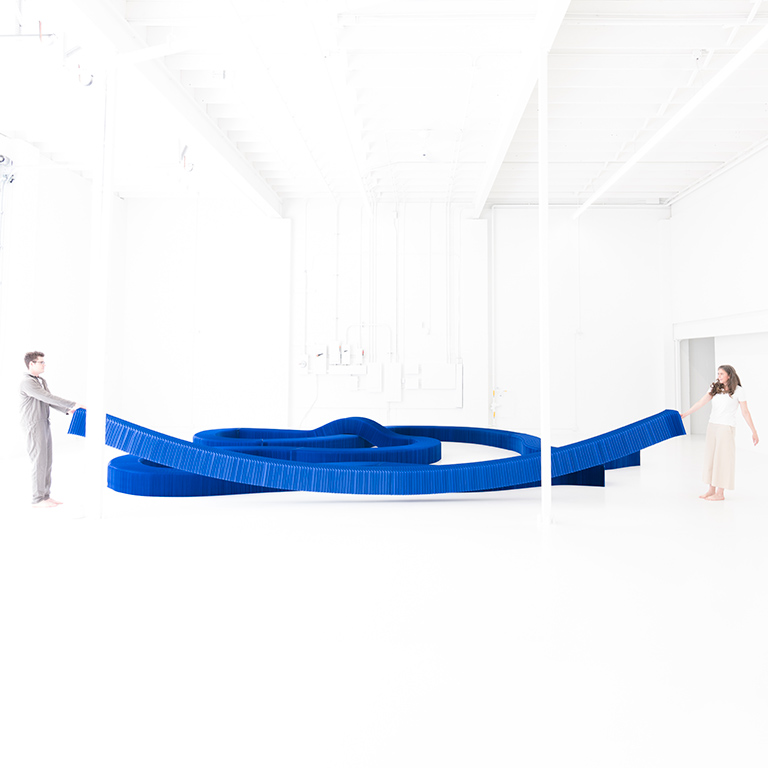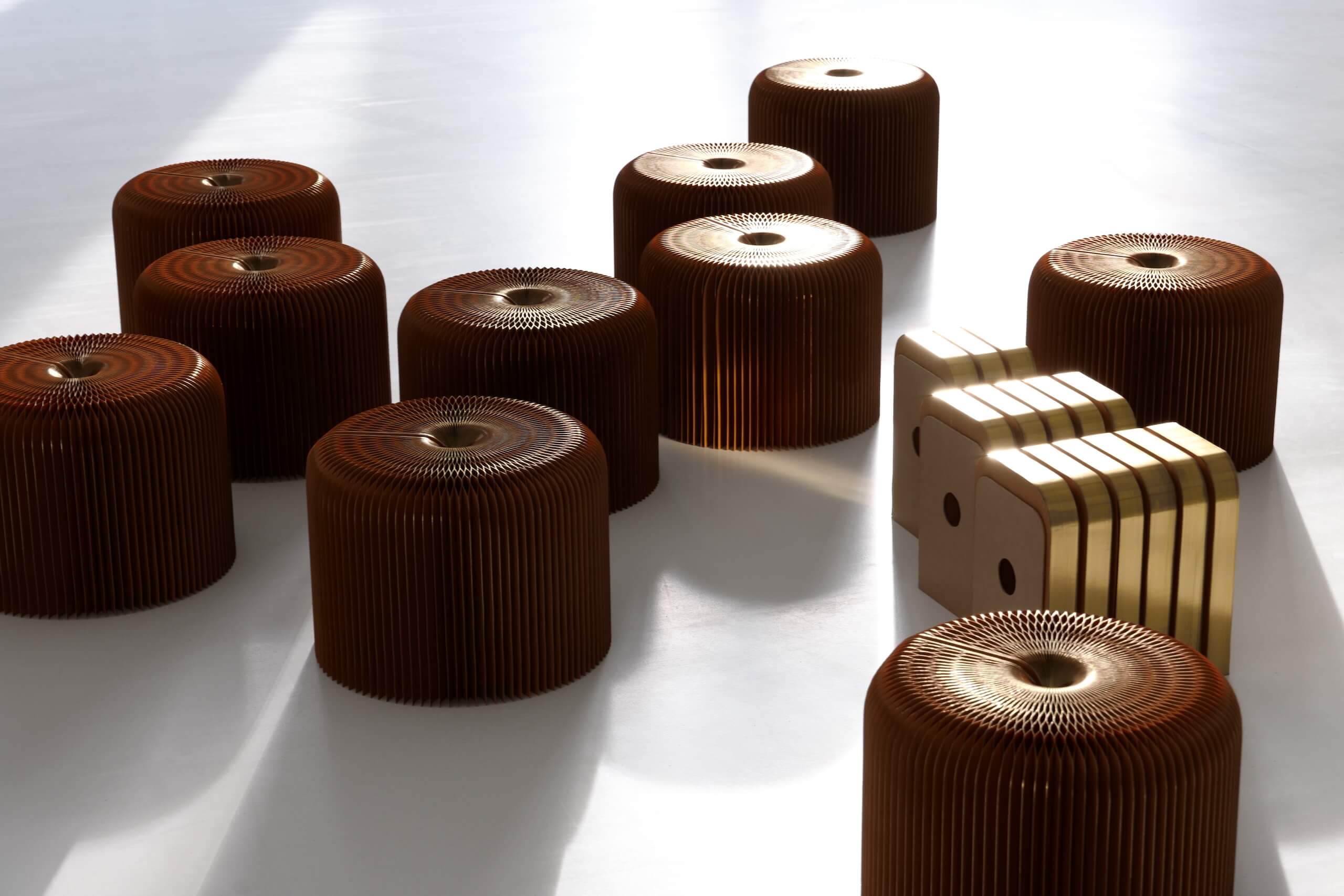
this is not your ordinary folding stool—it’s really strong, extremely flexible, fire retardant, and you can take it with you anywhere. It’s not limited to being just a folding stool either—it can serve as a low table or be reshaped for bench seating. It is also featured in the most famous museums around the world for its beautiful design, including the MoMA, Cooper Hewitt Smithsonian Design Museum, and the Chicago Art Institute.
the early days
the creation of softseating goes back to a series of competitions in which Forsythe + MacAllen participated starting in 2002. The designers were looking at ways to abstract a room into sculptural elements where there might not be a visual distinction between the objects.
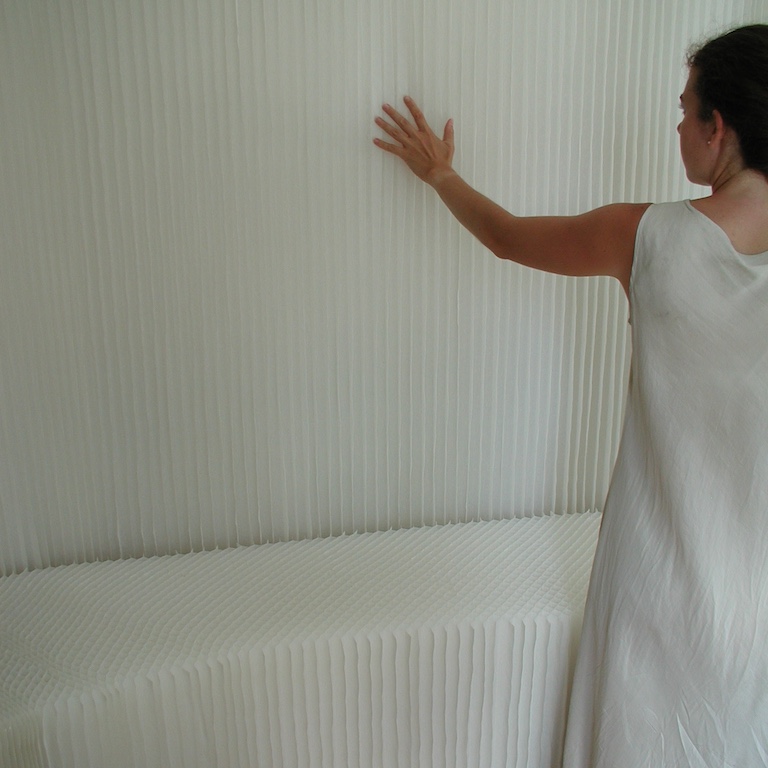
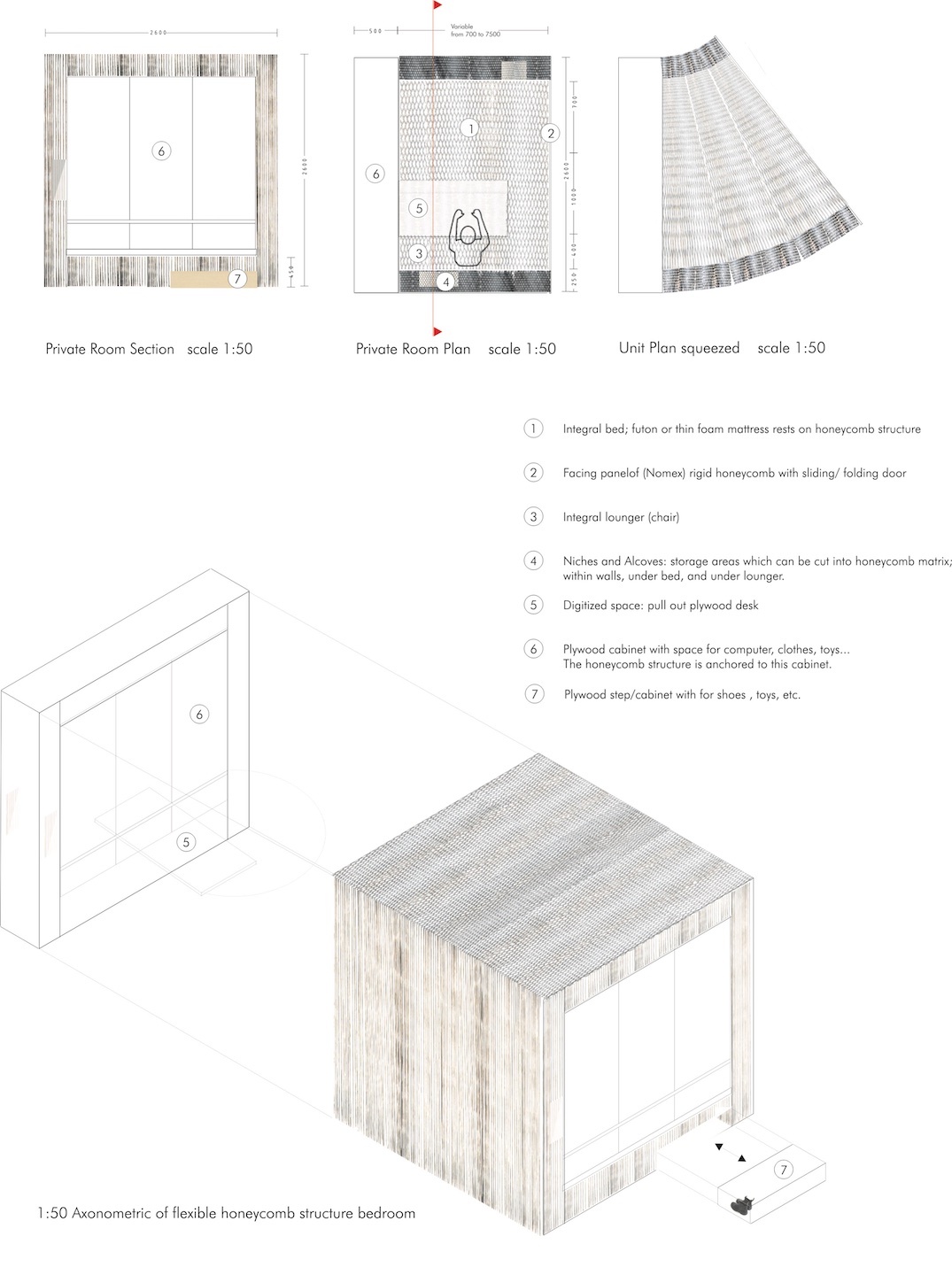
a wall, ceiling, lighting, bench, or table could be a series of modular and interchangeable pieces.
for maximum utility, Stephanie and Todd wanted these pieces to be flexible and extendible so they could take on different shapes and compress for compact storage.
from the conceptual idea of abstract elements, Forsythe + MacAllen focused their initial efforts on space-making and the development of a sculptural partition wall that could be extended and shaped according to need. With time and development, this became softwall.
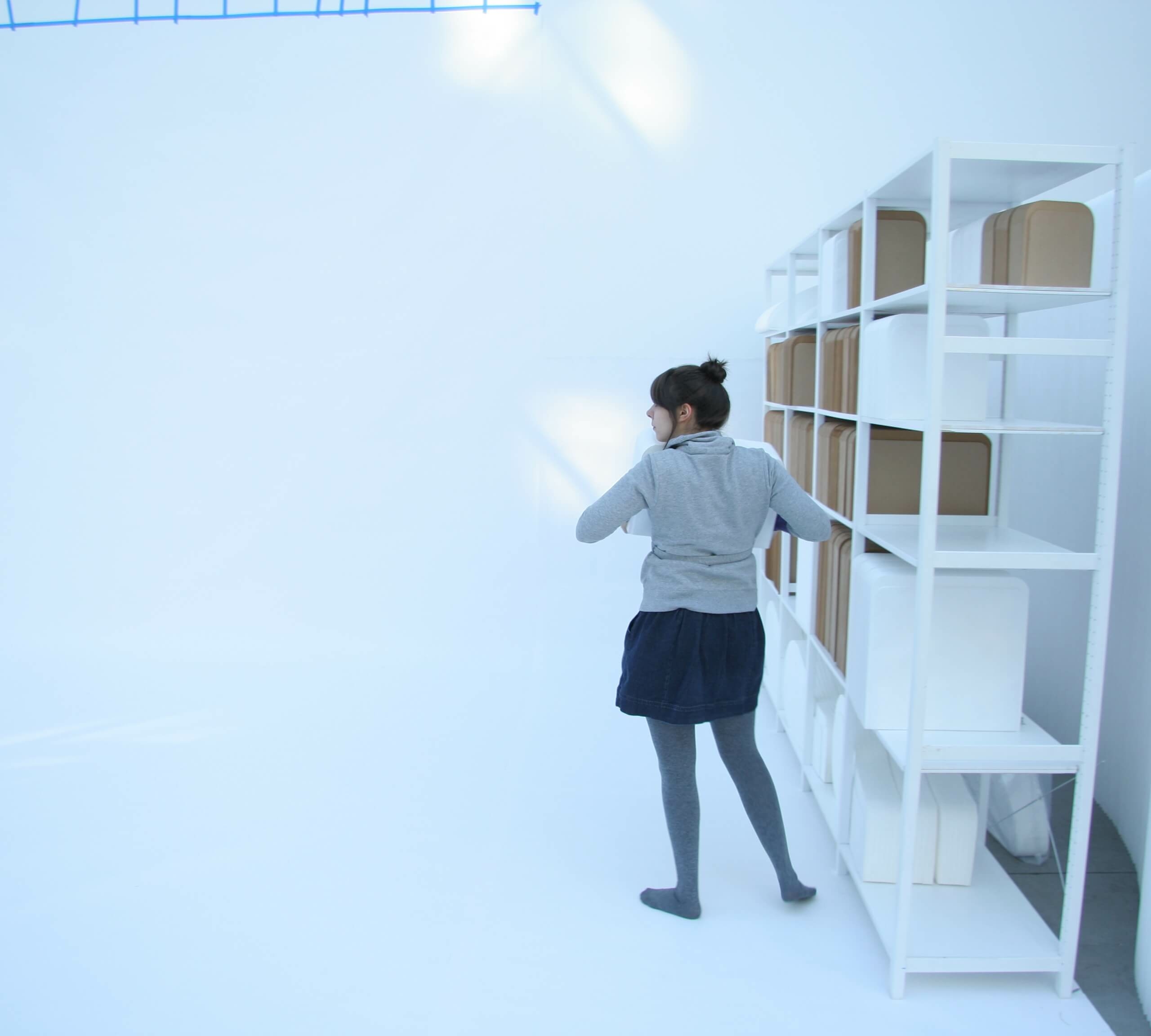
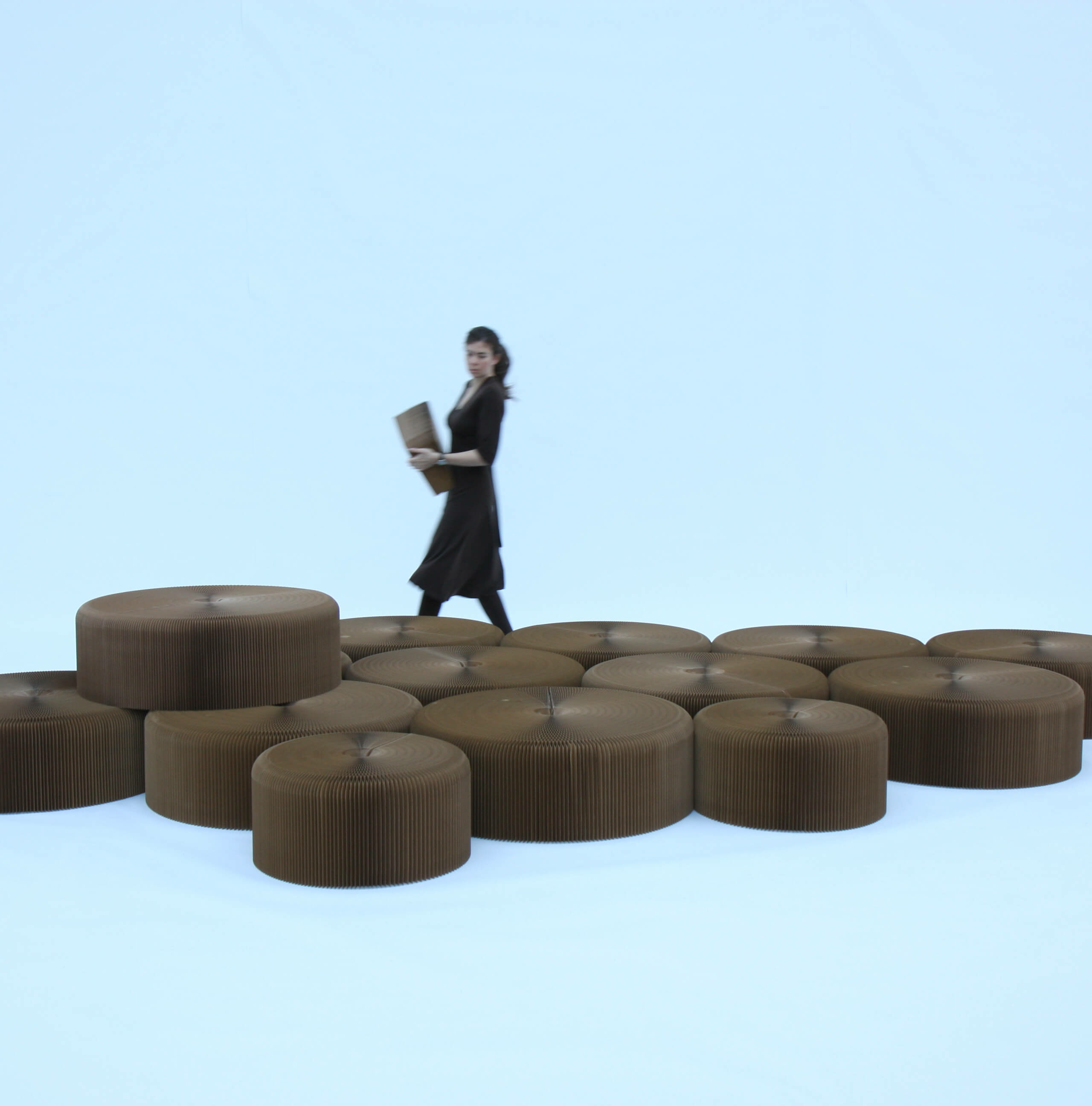
with softwall well underway, acquired by MoMA and then further developed using new materials, Stephanie and Todd turned their attention back to developing seating. From previous experimentation, the design pair knew they could make two initial forms–a snaking bench formed by attaching any number of pieces in succession, or they could attach each end of the module onto itself with Velcro® to make a cylinder.
recognized as being culturally impactful, innovative and beautiful by world leading art institutions
MoMA acquired multiple sizes of paper softseating in 2007 for the permanent collection. The subsequent significant development rounded the top edges of a softer sitting experience. Integrated magnets replaced Velcro® to make the works more abstract and monolithic – giving them the appearance of a single material.
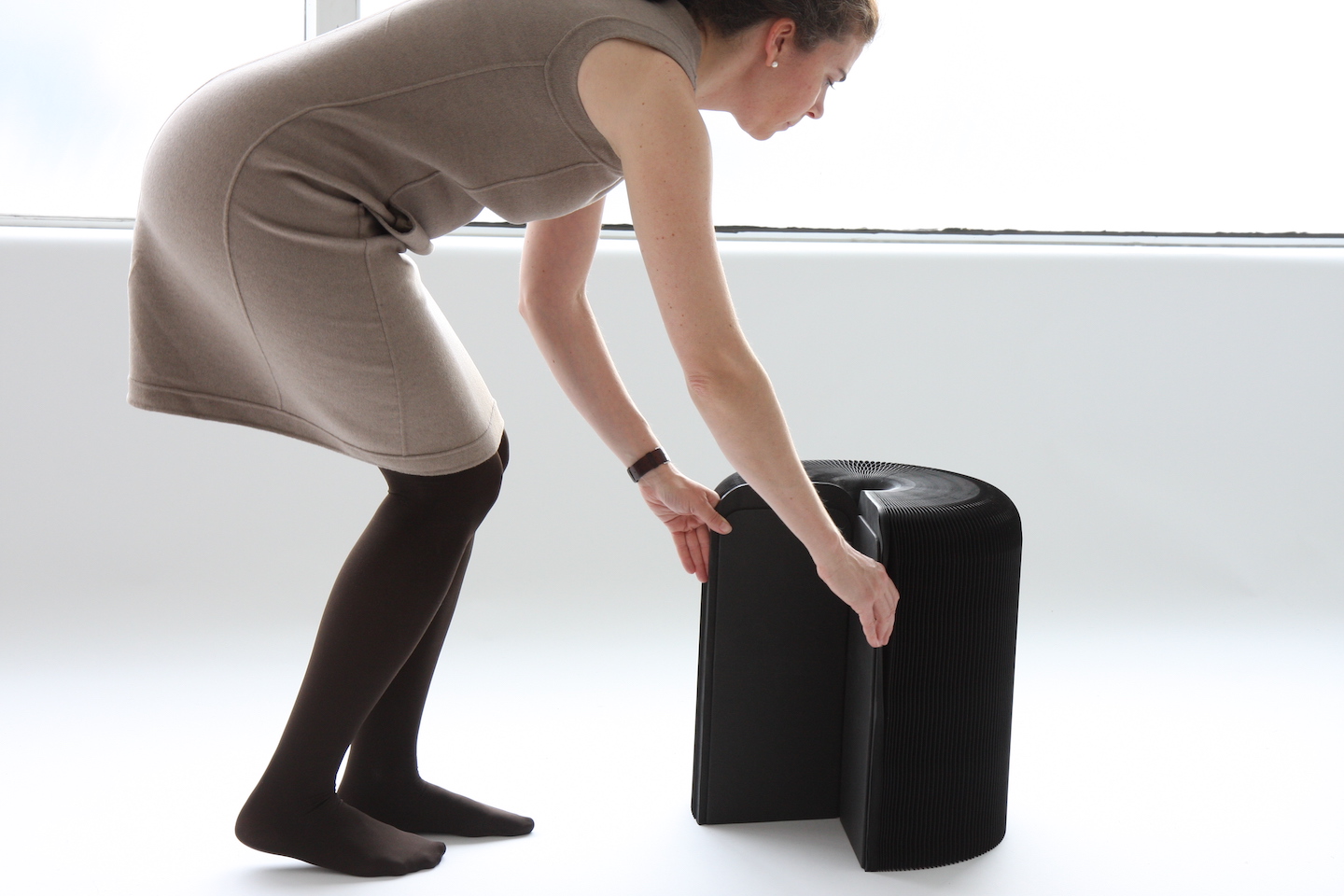
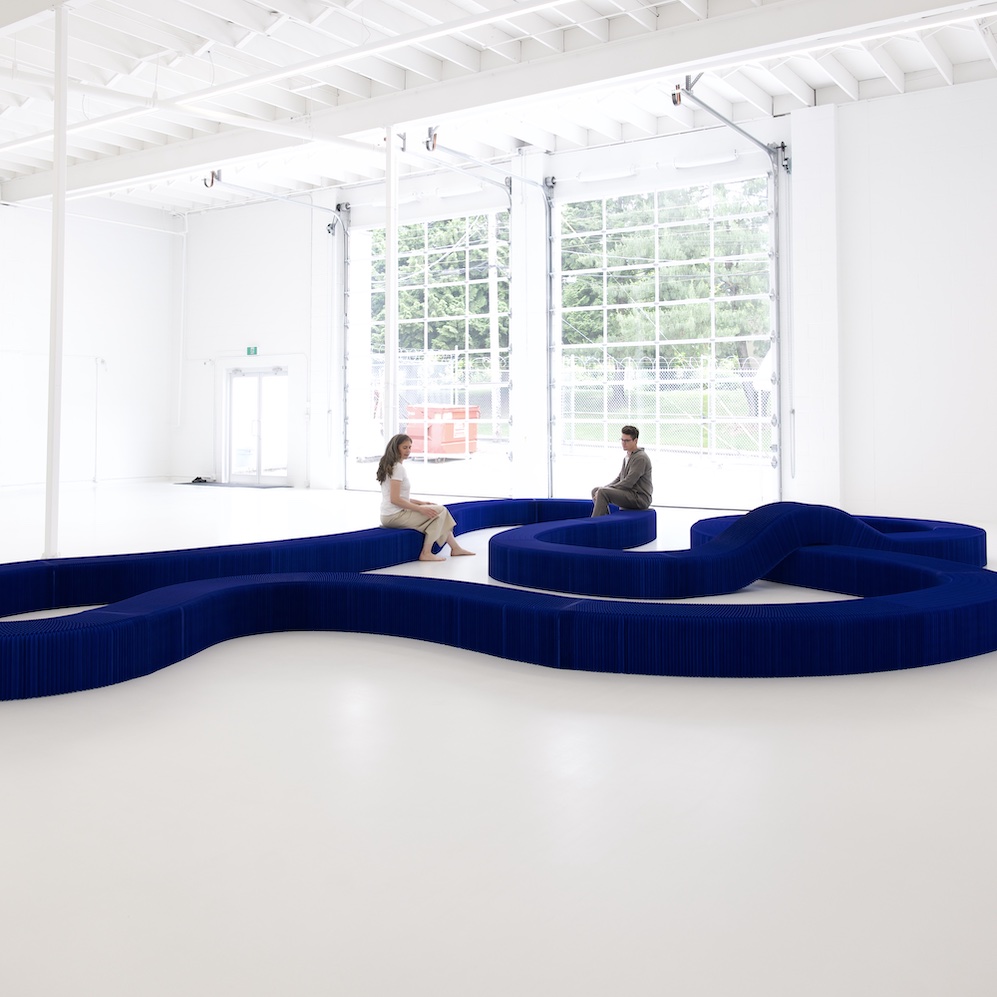
magnetic panels also made attachment simple and intuitive and extended the idea of modularity by making it easy to attach to other elements.
the Cooper Hewitt Smithsonian Design Museum also acquired paper softseating in 2007 for its permanent collection. Multiple sizes of paper softseating, including folding paper lounger, were acquired by the Art Institute of Chicago in 2009 for its permanent collection. The Art Institute of Chicago also acquired multiple sizes of textile softseating. The Montreal Museum of Fine Arts acquired multiple sizes of paper softseating in 2009 for its permanent collection.
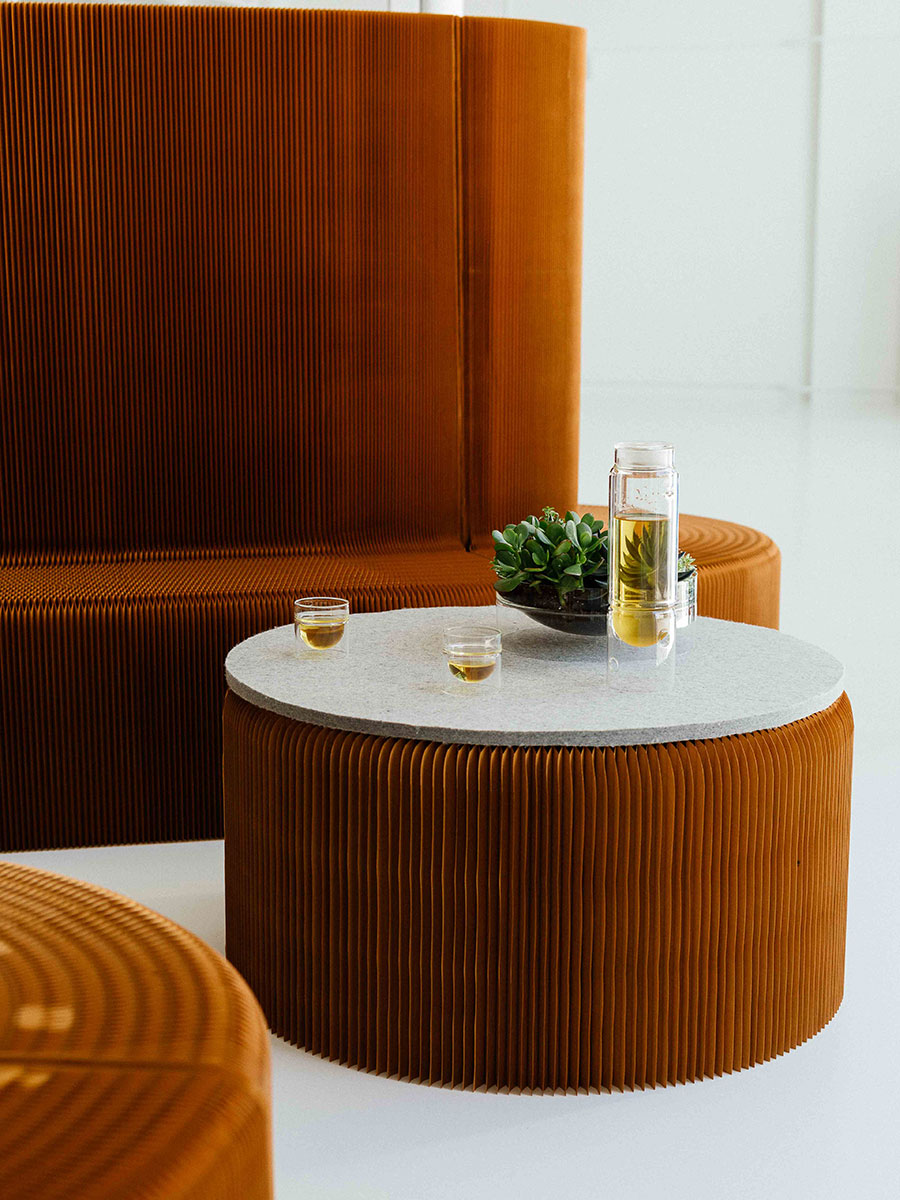
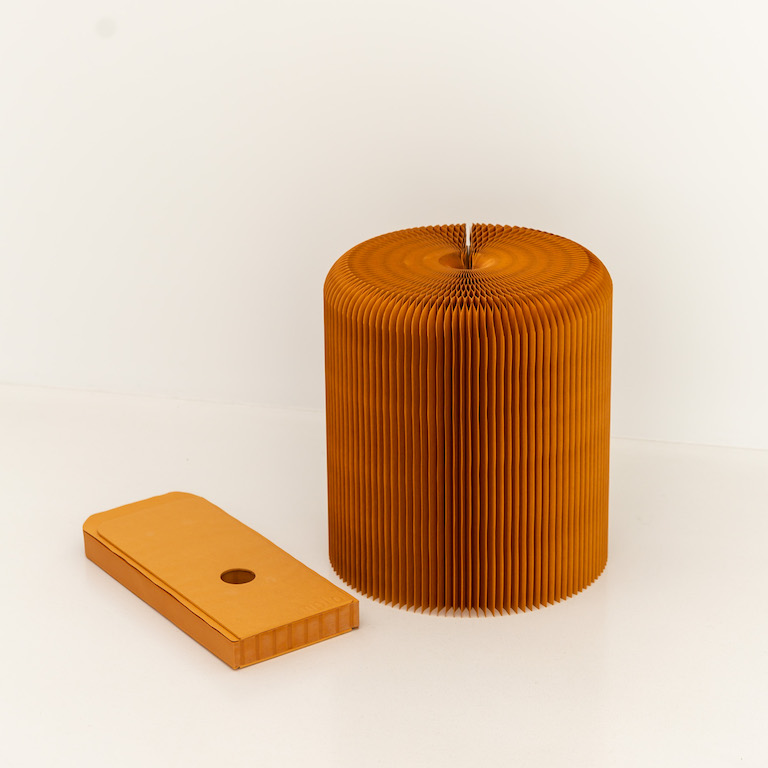
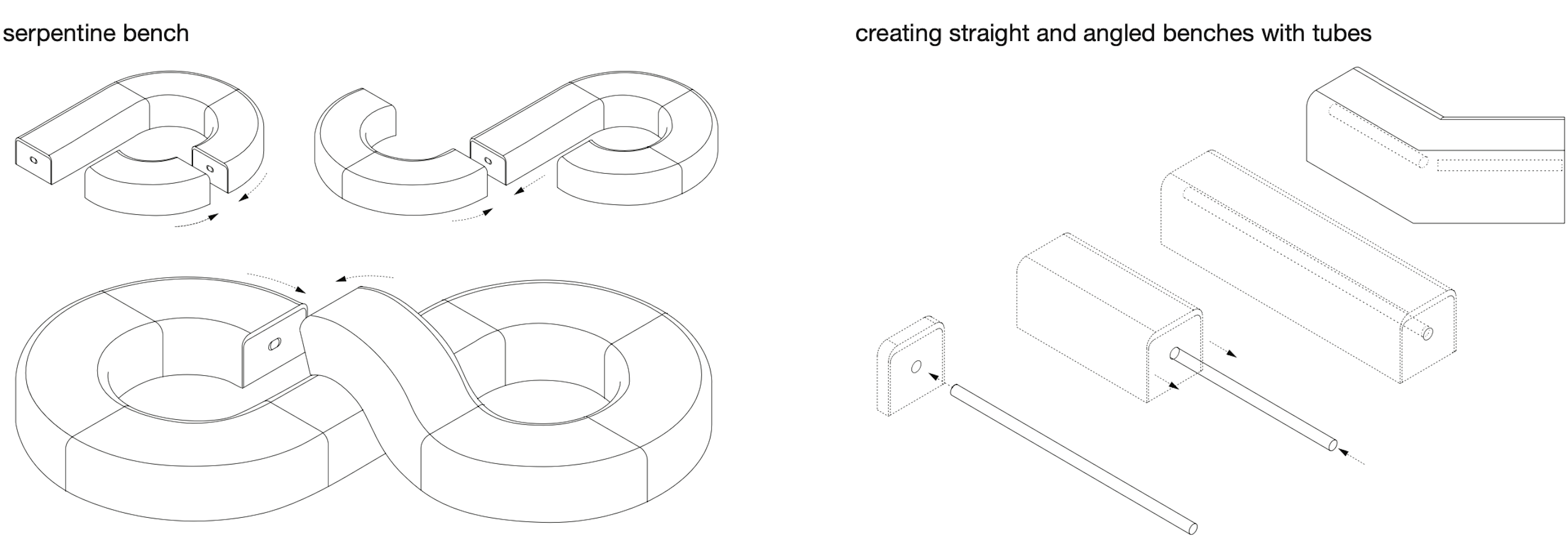
our folding stool today: additional features and add-ons
perhaps the most unique thing about softseating is that it can be put to use in so many different ways. Here is a shortlist of things that we love about softseating:
• It’s stackable: multiple stools can be stacked to create playful hills and display podiums.
• They connect: multiple stools can be connected by their magnetic end panels to form long, winding benches and creative seating topographies.
• Wider softseating can transform in shape from a stool to a bench.
• Brown and blue paper versions are made from wood harvested from FSC® Certified (FSC® C158591)
• Tops: each diameter of fanning stool has a corresponding wool felt pad, or PaperStone® top, which may be used as an optional cushion or soft table surface.
• Multiple colour options: brown, indigo, black, white, or aluminum. Softseating can also be specially ordered in any Pantone colour you like.
seat, coffee table, podium, bench or wherever your imagination takes you, our folding stool is intended to have a long, useful life. Furthermore, they are made with material that is 100% recyclable.

today the soft collection is featured in over 100 institutions around the world, including the Nobel Prize museum. Explore the full collection:
softseating
benchwall
paper lounger
cantilever table
room dividers
lighting
